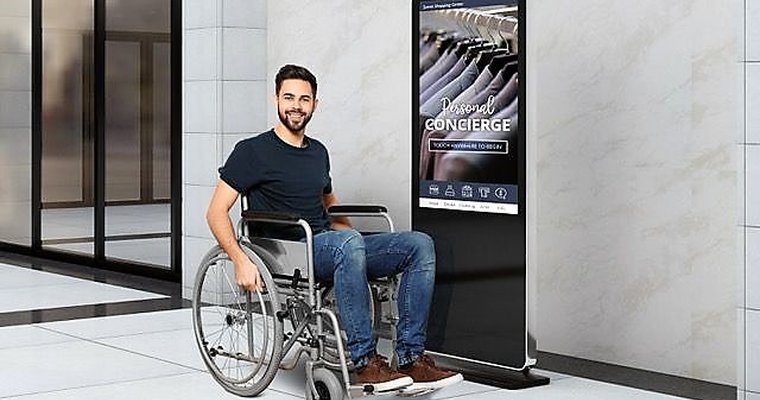Legacy solutions designed to make interactive kiosks more accessible to the visually or hearing impaired haven’t yet fully met the challenge. Creative ideas are needed.
More and more, businesses and organizations are deploying interactive kiosks. Grandview Research estimated this market at $26.63 billion in 2020 and anticipates a 6.9% combined annual growth rate through 2028.
Technology advancements, particularly in payment systems, are driving adoption, but businesses are also taking a hard look at self-service kiosks to fill the gap created by labor shortages in numerous verticals, such as restaurant and hospitality.
Kiosks with touchscreen interfaces give consumers one of the easiest ways to order, pay, find the information they need to make buying decisions and interact with businesses in other ways. However, when you deploy an interactive kiosk, you need to make sure it’s accessible and delivers good user experiences to everyone.
The Americans with Disabilities Act includes requirements for kiosks, such as wheelchair accessibility. However, even though your business may not be required to comply with other regulations, such as Section 508 of the Rehabilitation Act, you can use available guidance to make the kiosks you deploy usable by people who are visually or hearing impaired. Legacy solutions designed to make interactive kiosks more accessible to this demographic haven’t fully met the challenge. For example, some solutions include connectivity with headphones and a microphone, but a kiosk that accepts payment may require a person to speak a PIN, putting account security at risk.
The industry needs innovators to come forward with creative ideas for integrating advanced technologies with touchscreen kiosks to provide more elegant solutions to accessibility. These three technologies hold great potential to improve usability:
Tactile response
Haptics technologies can simulate touch sensations, such as vibration, pulse or even roughness or a raised shape. Employing haptics, an interactive kiosk can provide feedback to a visually impaired user or even provide information via Braille, allowing the user to read and enter information without a bystander overhearing the user communicate sensitive data verbally.
Voice
Consumers have grown quite comfortable with technology that leverages natural language processing, evidenced by the popularity of Siri, Alexa and voice-based systems. Integrating voice with an interactive kiosk can streamline interactions, such as allowing users to speak “yes” or “no” to confirm data rather than rekeying account numbers or other information.
Gesture
Although touchscreens have emerged as the most natural way for people to interact with technology, they aren’t easy for everyone to use. For example, people with tremors or limited use of their hands may not be able to navigate the screens quickly or easily. Also, people with prosthetic limbs may not be able to use capacitive touchscreens due to low conductivity of prosthetics. A machine vision system could augment an interactive kiosk with the ability to recognize gestures, such as pointing or swiping, so users wouldn’t have to make a connection with the touchscreen.
A richer experience for all
Solution builders who take on the challenge of designing accessible kiosks will be most successful if they take a holistic approach to their projects. Solutions in which all technologies work together seamlessly will enable natural interactions for all users. Looking at the task at hand from users’ perspectives will help inform your design so that it doesn’t exclude anyone from a good user experience.
Whether your solution is designed for ordering and paying for restaurant menu items, searching for an out-of-stock item with an endless aisle solution or self-checkout at a grocery store, you can make those processes easier for everyone and help your merchants enhance their brand reputations.
Prototypes that check those boxes will capture the attention of brands and investors — and business from consumers delighted finally to have found an easy way to interact with businesses.

